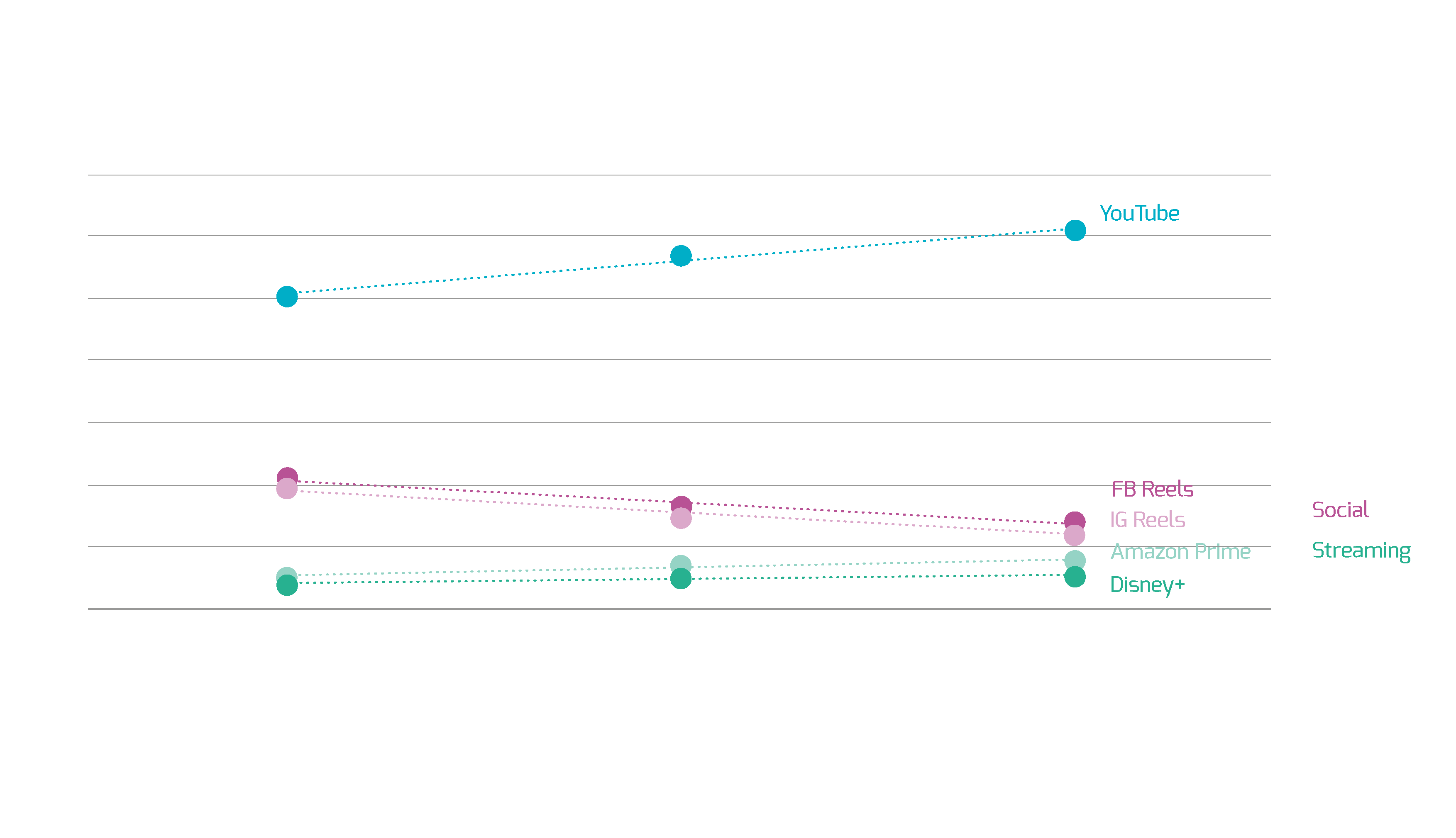What Netflix bounce patterns reveal about streaming competition and the YouTube gateway effect.
Not all app exits are created equal. Some users jump directly to a competitor. Others drift into a different category of content that represents a different mindset and intention. Understanding app switching behavior isn't just interesting—it's essential for knowing who your real competition is.
Streaming platforms are preoccupied with finding ways to compete with YouTube, but user behavior analytics reveals a more complex competitive landscape. We’ve seen them lean into short-form content (Peacock rolled out short-form vertical video earlier this year) and hire YouTube’s biggest celebs to create content (see Amazon’s “Beast Games” with Mr. Beast). And most recently, there’s Netflix’s deal with Spotify to air some video podcasts--which, importantly, would prohibit them from airing in entirety on YouTube.
Our data supports the competitive threat. Looking just at Netflix and YouTube, 9 in 10 Netflix users also use YouTube, while just 3 in 10 YouTube users also use Netflix. But beyond this broad user overlap, we investigated app journeys and quick-switch patterns to understand how different entertainment platforms serve different moments and mindsets—and what this reveals about the nature of streaming competition.
We analyzed platform switching patterns by tracking “bounces”—when users spend 10 minutes or less on Netflix before switching to another media app (specifically tracking transitions between Netflix and five major platforms: YouTube, Amazon Prime, Disney+, Instagram Reels, and Facebook Reels). These quick exits reveal where users go when they're not finding what they want, or when Netflix loses out in the battle for attention.
The clear winner? YouTube.
Among bounces that go to one of these five platforms:

YouTube is especially dominant for quick switches, suggesting active substitution rather than habitual scrolling. The quicker users switch, the more likely they are to go to YouTube and other streaming platforms (Amazon Prime, Disney+), while social media (Instagram and Facebook Reels) picks up a larger share of the slower switches. When Netflix doesn’t deliver, users seek out immediate alternatives to find something to watch.
Once on YouTube, these former Netflix viewers are more likely to gravitate toward entertainment and film. This is more evidence these users are staying in “content consumption mode.”

But YouTube is more than just a streaming alternative: it’s an inflection point in the user attention journey, revealing critical competitive intelligence about where audiences actually flow.
When we look at the same bounce patterns for YouTube, the pattern reverses: within our media ecosystem, over half go to Instagram Reels (57%) and a third to Facebook Reels, while just 1 in 10 return to streaming platforms like Netflix or Amazon Prime.
What this means: YouTube acts as a gateway from long-form to short-form content. Users move easily from Netflix → YouTube → Reels, but infrequently reverse back to focused streaming.

Each platform represents a different behavioral state, and understanding these modes explains why the attention cascade flows in one direction:
Traditional competitive intelligence focuses on direct substitutes: other streamers for Netflix, other social platforms for Instagram. But the attention cascade reveals a different competitive dynamic: platforms that pull users into entirely different behavioral modes.
Tracking app switching behavior and understanding which platforms make it harder for users to return is competitive intelligence that doesn't show up in market share reports.
Want to understand your competitive landscape beyond traditional market share? RealityMine's behavioral data reveals where your users really go—and why they don't come back.